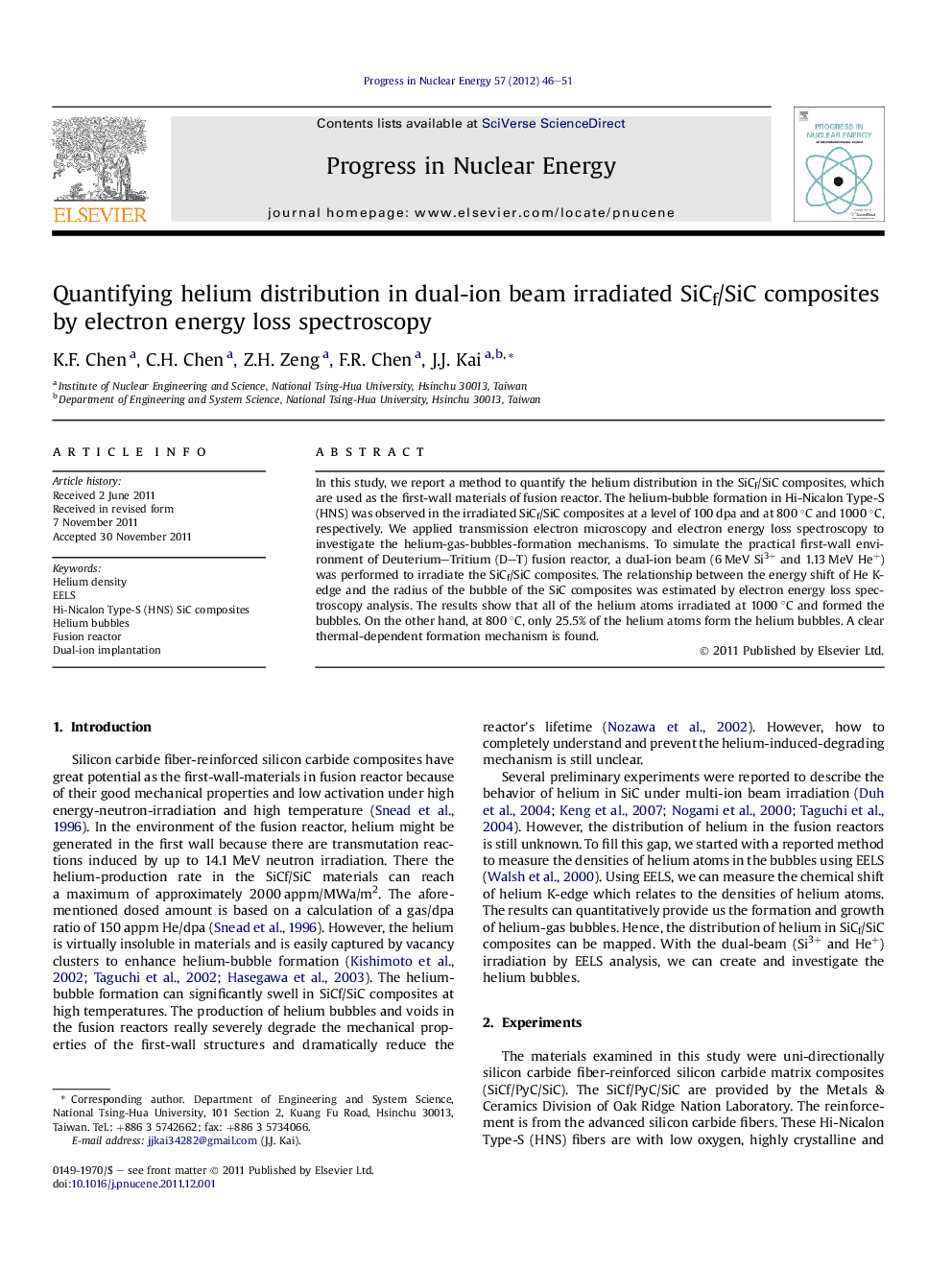| Article ID | Journal | Published Year | Pages | File Type |
|---|---|---|---|---|
| 1741094 | Progress in Nuclear Energy | 2012 | 6 Pages |
In this study, we report a method to quantify the helium distribution in the SiCf/SiC composites, which are used as the first-wall materials of fusion reactor. The helium-bubble formation in Hi-Nicalon Type-S (HNS) was observed in the irradiated SiCf/SiC composites at a level of 100 dpa and at 800 °C and 1000 °C, respectively. We applied transmission electron microscopy and electron energy loss spectroscopy to investigate the helium-gas-bubbles-formation mechanisms. To simulate the practical first-wall environment of Deuterium–Tritium (D–T) fusion reactor, a dual-ion beam (6 MeV Si3+ and 1.13 MeV He+) was performed to irradiate the SiCf/SiC composites. The relationship between the energy shift of He K-edge and the radius of the bubble of the SiC composites was estimated by electron energy loss spectroscopy analysis. The results show that all of the helium atoms irradiated at 1000 °C and formed the bubbles. On the other hand, at 800 °C, only 25.5% of the helium atoms form the helium bubbles. A clear thermal-dependent formation mechanism is found.
